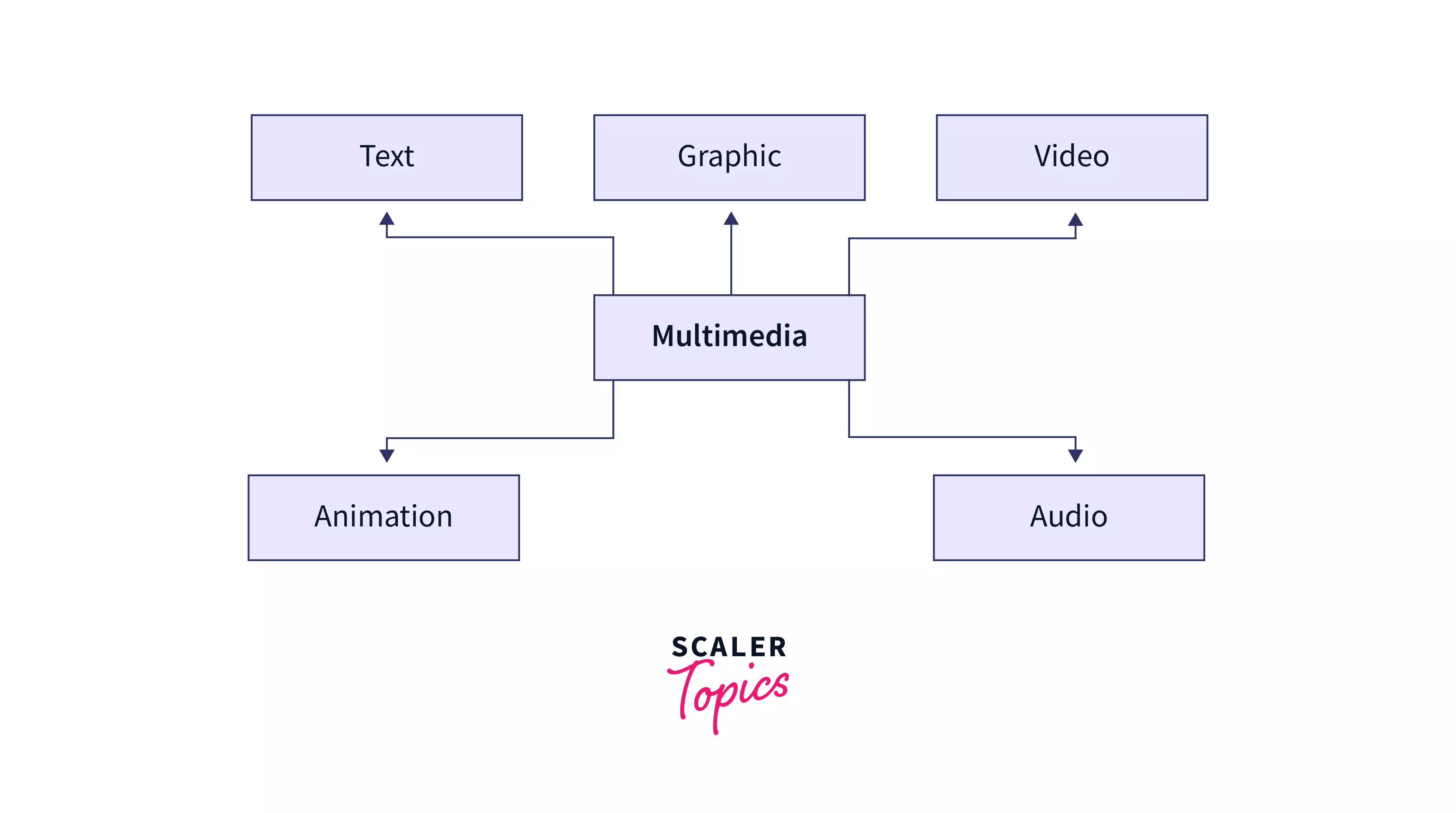Multimedia Database

Multimedia data is an interactive way to represent information to a user. It includes several categories of data like textual data, audio data, video data, etc. The database that is used to hold these different kinds of multimedia data is known as a multimedia database. Let's explore the multimedia database in this article.

A Multimedia database is a special type of database that helps us to organize, query, and store inter-related multimedia data. It facilitates the storage and retrieval of multimedia data elements. In these databases, all the media files are stored in the form of binary strings and are encoded according to their file types.
Types of Multimedia Database
Based on the type of multimedia data it stores, the multimedia database is categorized into three types:
- Static media: These multimedia datasets are specifically used for static media objects, i.e., those objects that are independent of time constraints, such as images and graphic objects.
- Dynamic media: These datasets are used to store dynamic forms of media content, i.e., multimedia data elements that are time-dependent, like audio data, video data, and animations.
- Dimensional media: Dimensional multimedia datasets are typically used in Computer-Aided Drafting programs. These operate on 3D multimedia data and include various formats used by image and video editing applications.
Content of Multimedia Database
To effectively manage and query a large collection of multimedia data, multimedia databases also store additional information related to the data apart from the primary multimedia data. The contents of a multimedia database are:
- Media data: It is the actual multimedia data or the primary data stored in the multimedia database. It represents a multimedia object and can be an image, audio, video, animation, graphic object, or text.
- Media format data: It is the information related to the format of the multimedia data. It contains data such as frame rates, encoding schemes, etc.
- Media keyword data: It is also knowns as content descriptive data and contains information related to the generation of multimedia data like date and time in the case of images and videos, etc.
- Media feature data: It is used to describe the features of multimedia data, such as the distribution of colors, etc.
Types of Multimedia Applications Based on the Data Management Characteristics
There are numerous applications of a multimedia database. The applications of a multimedia database can be broadly categorized into three different types which include:
- Repository Applications: In these cases, multimedia databases act as storage and retrieval solution for large amounts of multimedia data such as satellite images, radiology images, etc.
- Presentation Applications: These include applications in which multimedia data is subject to temporal constraints, i.e., the multimedia database is required to deliver multimedia data at a certain rate to maintain the quality of the service. It mainly includes real-time image and video editing software applications.
- Collaborative Work Using Multimedia Information: These applications tackle and execute complex tasks using shared multimedia data. It includes the merging of media in intelligent healthcare networks, etc.
Challenges of Multimedia Database
To implement a multimedia database, we need to overcome some of the commonly occurring challenges. These include:
- Storage: The large size of multimedia data affects its storage, retrieval, and transmission. Hence, it requires special storage facilities, which are bigger and faster than conventional disc storage.
- Modelling: Multimedia data exist in various formats, and it is difficult to convert one form of media content into another. This hugely affects the multimedia data retrieval process.
- Performance: Because of its huge size and storage requirements, it takes a lot of time to process different kinds of multimedia data. Hence, multimedia databases are slower than traditional databases and require large bandwidth and high processing power.
- Querying: Content-based searching of multimedia content makes use of computer vision techniques to retrieve digital multimedia data from a large database. This is difficult to implement and is not conveniently supported by traditional relational databases.
Applications of Multimedia Database
As discussed, there are many applications of a multimedia database. Some of the main applications include:
- Documents and record management: Multimedia databases are used in industries that require a large set of documentation and records, like the insurance claim industry, etc.
- Education: As multimedia data provides an interactive way to represent data, a multimedia database can act as an effective knowledge dissemination tool. These applications include the use of multimedia datasets in digital libraries and computer-aided learning software.
- Marketing and Entertainment: A Multimedia database can act as a data provider for entertainment applications like video-on-demand apps, news-on-demand apps, etc. It can provide multimedia data for advertisements and digital marketing processes.
- Real-time Monitoring: Combining various software tools with a multimedia database can allow us to monitor and manage multimedia data in real-time. For example, a geographic information system (GIS) makes use of multimedia databases to analyze and visualize geographical multimedia data in real-time.
Conclusion
- Multimedia data includes text, images, audio, video, animation, and graphic objects.
- Multimedia database is a special database that holds different kinds of multimedia data.
- Depending on the data it holds, multimedia databases are of 3 types: Static, Dynamic, and Dimensional.
- A multimedia database includes the primary data along with its metadata (media format, keyword, and features)
- A multimedia database can be used as a repository for a presentation and collaborative works.
- Due to the complexity, variety, and large size of multimedia data, many issues are there while setting up a multimedia database.
- Multimedia databases have a wide variety of applications, from digital libraries to Geographic Information Systems (GIS).
